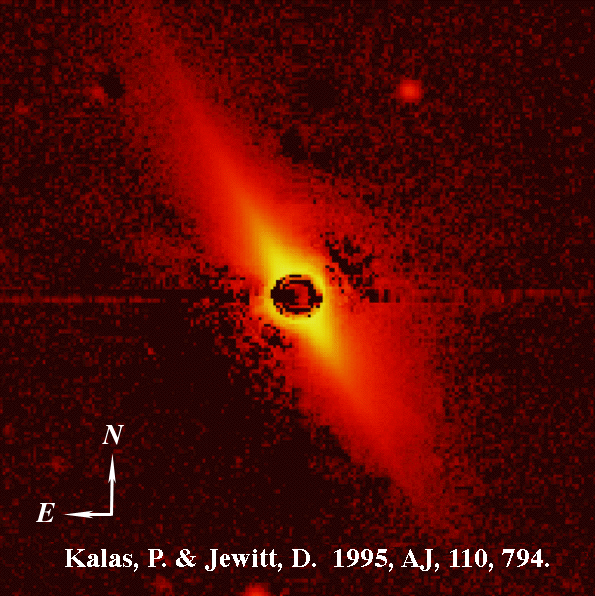
| Shaking Loose the Oort Cloud Comets |
|---|

Stellar Perturbations
Stars in the disk of the Milky Way share a common motion around the center of the galaxy but also move relative to each other. The typical velocity differences among stars in the solar neighborhood are about 20 km/s. As a result, comets in the Oort Cloud are frequently perturbed by the gravity of passing stars. When a star of mass M* passes the sun at distance d and speed V*, the change in the velocity of an orbiting Oort Cloud comet is
For a solar mass star passing at 0.5 parsec with V* = 20 km/s, the velocity change is about 1 m/s. This is to be compared with the Keplerian orbital velocity of about 100 m/s. The stars approach from random directions, so the velocity changes are sometimes positive, sometimes negative. The combined effect is a "random walk" in the magnitude of the velocity perturbation such that, after 10,000 stars have passed by, the original orbit of the comet has been drastically altered. How long does this take? The answer depends on where in the Oort Cloud the comet resides. At the outer edge, the attraction to the sun is weak and passing stars have a big effect. Most of the LPCs are thought to fall from the outer parts of the Oort Cloud. Closer to the sun, the Oort Cloud comets are tightly held and may never be dislodged by the gravity of passing stars.
Comets leave the Oort Cloud because they are perturbed by passing stars. Some of the comets fall into the inner solar system and come under the gravitational control of the planets. These "fresh" comets from the Oort Cloud make up the bulk of the LPCs. An equal number of comets are ejected from the Oort Cloud to interstellar space - they are lost forever to our solar system.
Other Perturbations
The gravity of the Milky Way disk itself disturbs the orbits of comets in the Oort Cloud, with an effect comparable in size to that of passing stars.The sun may (on very rare occasions) pass through a Giant Molecular Cloud, and this may disturb the Oort Cloud causing a shower of comets to rain on the inner planetary system.
Some people have conjectured that the sun has a companion star which could disturb the Oort cloud once per orbit. If so, periodic comet showers might result. Invented to account for supposed periodic mass extinctions, this idea is no longer very popular since the evidence for periodicity in the extinctions is not credible.
Last updated December 1997
 |
||
| Origin | Comet | Jewitt |
|---|